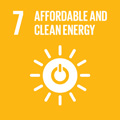- Docente: Alberto Bellini
- Credits: 6
- SSD: ING-IND/32
- Language: Italian
- Teaching Mode: Traditional lectures
- Campus: Cesena
-
Corso:
First cycle degree programme (L) in
Biomedical Engineering (cod. 9082)
Also valid for First cycle degree programme (L) in Electronics Engineering (cod. 5834)
-
from Feb 21, 2023 to Jun 06, 2023
Learning outcomes
At the end of the course, students will be able to use electric engineering technologies for the analysis, the choice and use of the main electrical machines for residential and industrial applications.
Course contents
Introduction
Magnetic circuits, principles of electromechanical energy conversion, evaluation of forces and torques in the electromechanical systems. Energy and co-energy.
DC machines
Structure, operating principles, armature reaction, commutation, commutation poles, compensation windings, independent and series connected field windings, machine equations, torque characteristic, speed control.
AC machines
Asynchronous machine: structure, rotating field, slip, equivalent circuit, torque characteristic, speed control, constant V/F operating conditions.Synchronous machine with rotor windings: structure, operating principles, salient-rotor and cylindrical rotor machines, torque characteristic.Brushless machine: structure, operating principles, brushless machine with trapezoidal emf, brushless machine with sinusoidal emf, speed control.
Stepping motor
Reluctance motor, permanent magnet motor, hybrid motor and linear motor.
Readings/Bibliography
The pdf files of the slides utilized during the lessons can be downloaded from virtuale.unibo.it.
1. L. Olivieri, E. Ravelli: ”Principi e Applicazioni di Elettrotecnica”, vol.2, CEDAM Editrice, 1992.
2. A. E. Fitzgerald, C. Kingsley, A. Kusko: “Macchine Elettriche”, Franco Angeli, Milano.
3. D. O'Kelly: “Performance and Control of electrical machines”, McGraw-Hill Book Company.
4. L. Bonometti: “Convertitori di Potenza e Servomotori Brushless”, UTET, Editoriale Delfino.Teaching methods
The lessons are supported by numerical simulation of main electric machines.
Assessment methods
A written test on DC, AC machines analysis and sizing will be used to assess skills in electrical engineering and electric machines.
All students will show substantial improvement in stated learning outcomes, as indicated by pre- and post- evaluation of real problems.
Teaching tools
Lessons and exercises are carried out with the help of a personal computer and a computer projector (Power Point, MATLAB).
Office hours
See the website of Alberto Bellini
SDGs


This teaching activity contributes to the achievement of the Sustainable Development Goals of the UN 2030 Agenda.
